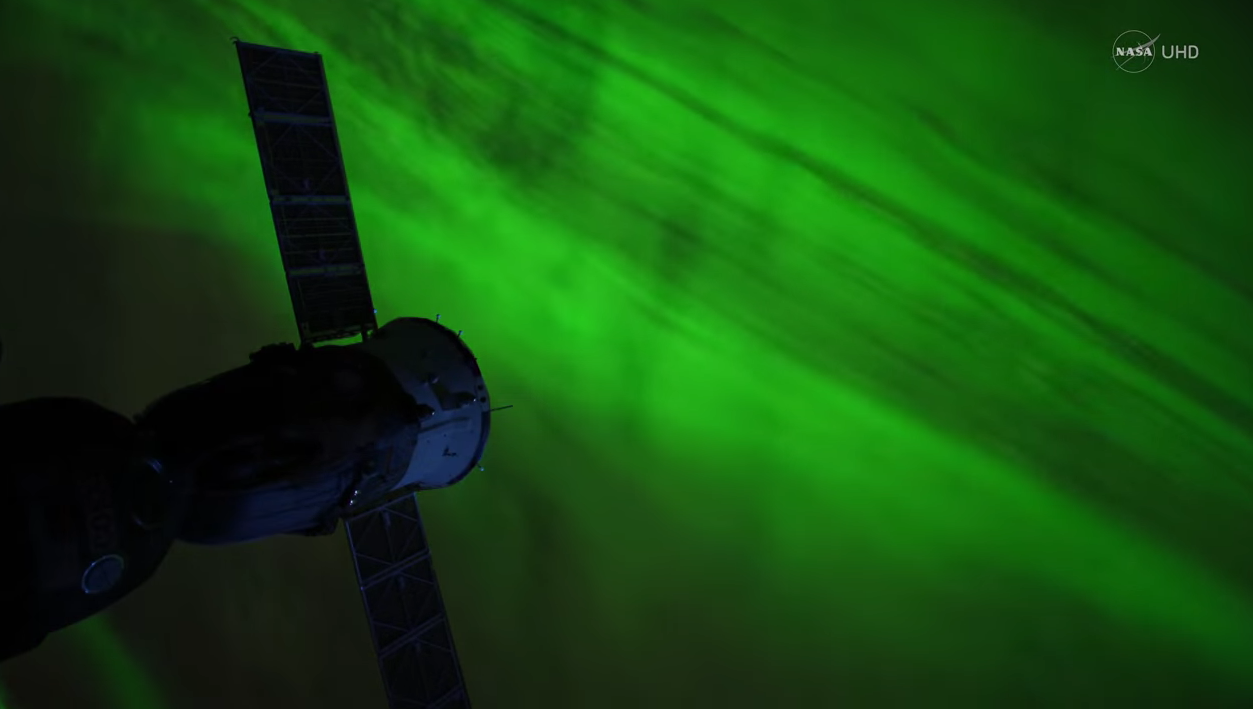Spectacular Auroras Captured in Dramatic New Time-Lapse Video

The shimmering atmospheric lighting displays known as auroras have never looked sharper than in a new ultra-high-definition video that was shot in space.
The stunning time-lapse footage was captured from the International Space Station in 4K ultra high definition (UHD), a video format with a resolution of 3,840 pixels horizontal by 2,160 pixels vertical. (For comparison, full-HD resolution is 1,920 pixels by 1,080 pixels.) The eye-catching video was uploaded by NASA TV to YouTube on April 17.
As the space station passes overhead, the auroras' colorful, translucent light displays — mostly shades of brilliant greens with some purple and yellow hues — hover above Earth. They are strikingly vivid, and the swirling shapes they produce are astonishingly distinct and detailed. [Watch the video of the amazing auroras from space]
Auroras are produced when solar particles that are ejected from the sun and carried to Earth by solar winds collide with electrically charged particles in Earth's magnetic field, triggering reactions in the upper atmosphere that release light.
They are most commonly glimpsed on Earth at high latitudes, in the Northern and Southern hemispheres. While auroras are typically green, they can also appear violet, red, blue, while or pink, according to NASA.
To produce the auroras video, NASA partnered with media infrastructure experts at Harmonic, with whom they also launched a new UHD channel featuring 4K content — the first noncommercial UHD channel in North America — the agency said in a statement.
And the auroras are just part of the dynamic activity captured in NASA's videos. The agency has also released 4K UHD footage of lightning flashes, the setting moon, expanses of clouds spread over the oceans, and the sprawl of city lights at night.
Sign up for the Live Science daily newsletter now
Get the world’s most fascinating discoveries delivered straight to your inbox.
This is one video you're going to want to watch as large as possible — trust us, it'll be worth it.
Follow Mindy Weisberger on Twitter and Google+. Follow us @livescience, Facebook & Google+. Original article on Live Science.

Mindy Weisberger is an editor at Scholastic and a former Live Science channel editor and senior writer. She has reported on general science, covering climate change, paleontology, biology and space. Mindy studied film at Columbia University; prior to Live Science she produced, wrote and directed media for the American Museum of Natural History in New York City. Her videos about dinosaurs, astrophysics, biodiversity and evolution appear in museums and science centers worldwide, earning awards such as the CINE Golden Eagle and the Communicator Award of Excellence. Her writing has also appeared in Scientific American, The Washington Post and How It Works Magazine. Her book "Rise of the Zombie Bugs: The Surprising Science of Parasitic Mind Control" will be published in spring 2025 by Johns Hopkins University Press.










